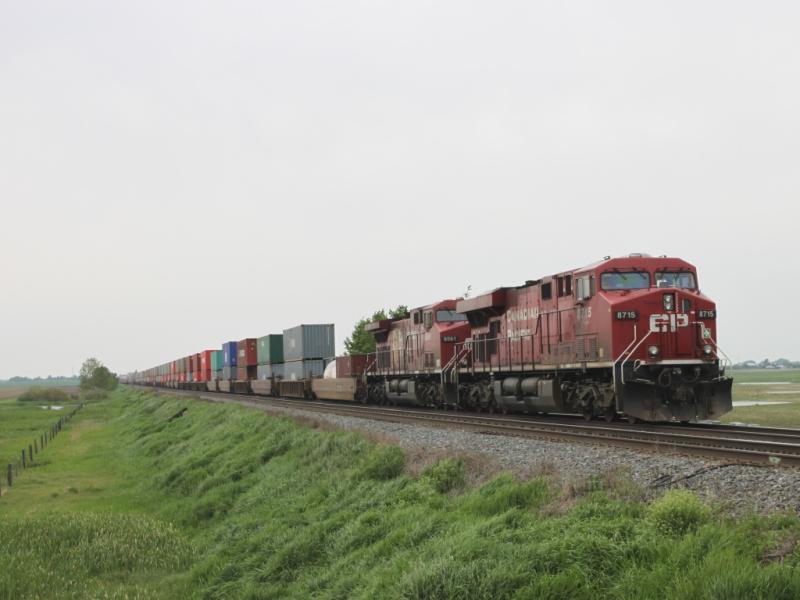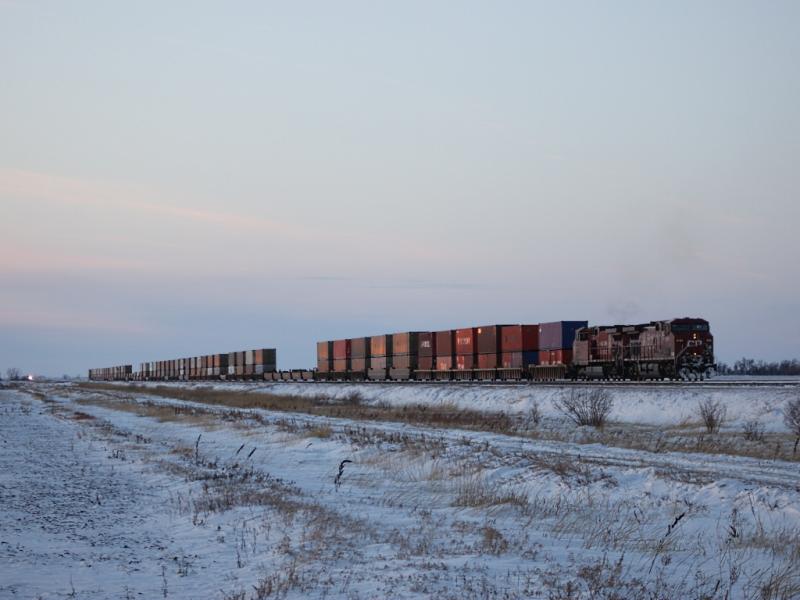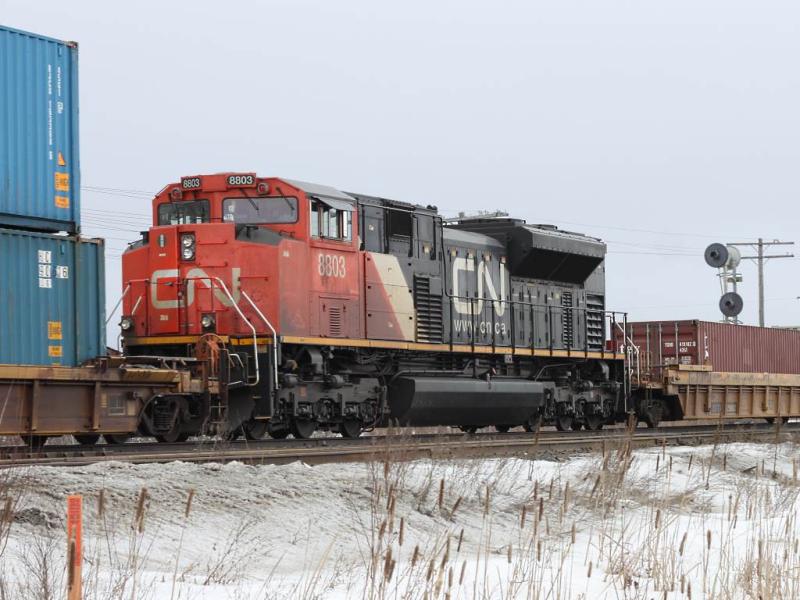
There's a good article in the Financial Post about today's very long trains. Observers of the railways in North America will have noticed the gradual lengthening of trains from the 1990s trains not exceeding a mile in length, to today's trains, which can exceed two miles in length.
The main drivers behind the increase in length are twofold: using more track capacity, and reducing the number of crews required. Packing more cars per train means you can run more tonnage over a given line. Perhaps more importantly, running fewer trains means you need fewer crews to man them.

The railways have invested heavily in increasing train lengths. Siding lengths have had to be increased, often more than once in the past two decades, to allow longer trains to meet and pass each other. Many locomotives are now equipped to be controlled remotely, as Distributed Power Units (DPU). Placing DPU engines in the middle or rear of trains reduces the in-train forces caused by acceleration and deceleration to be reduced, bringing down the risk of derailments. CN in particular had a number of accidents in British Columbia after they took over BC Rail due to the lack of DPU engines in the long trains they ran through the mountains.

As the article says, how long can trains go?
A hat tip to Matt aka Saintjohnrailfan for the article link!
2 comments:
Thanks for the post.
How has traffic in Canada faired? IIRC 2006 was the peak in the US for car loadings. I ask because the below statement caught my eye and I wondering how much it reflected changes in operations versus less traffic.
http://www.financialpost.com/news/long+trains/4348592/story.html
The number of accidents at CN fell to a record low of 37 in 2010 from 41 in 2009. That followed a sharp 35% drop in accidents the year before.
This indeed is a very long train.
Thanks for sharing,
Cathy@embroidery digitizer
Post a Comment